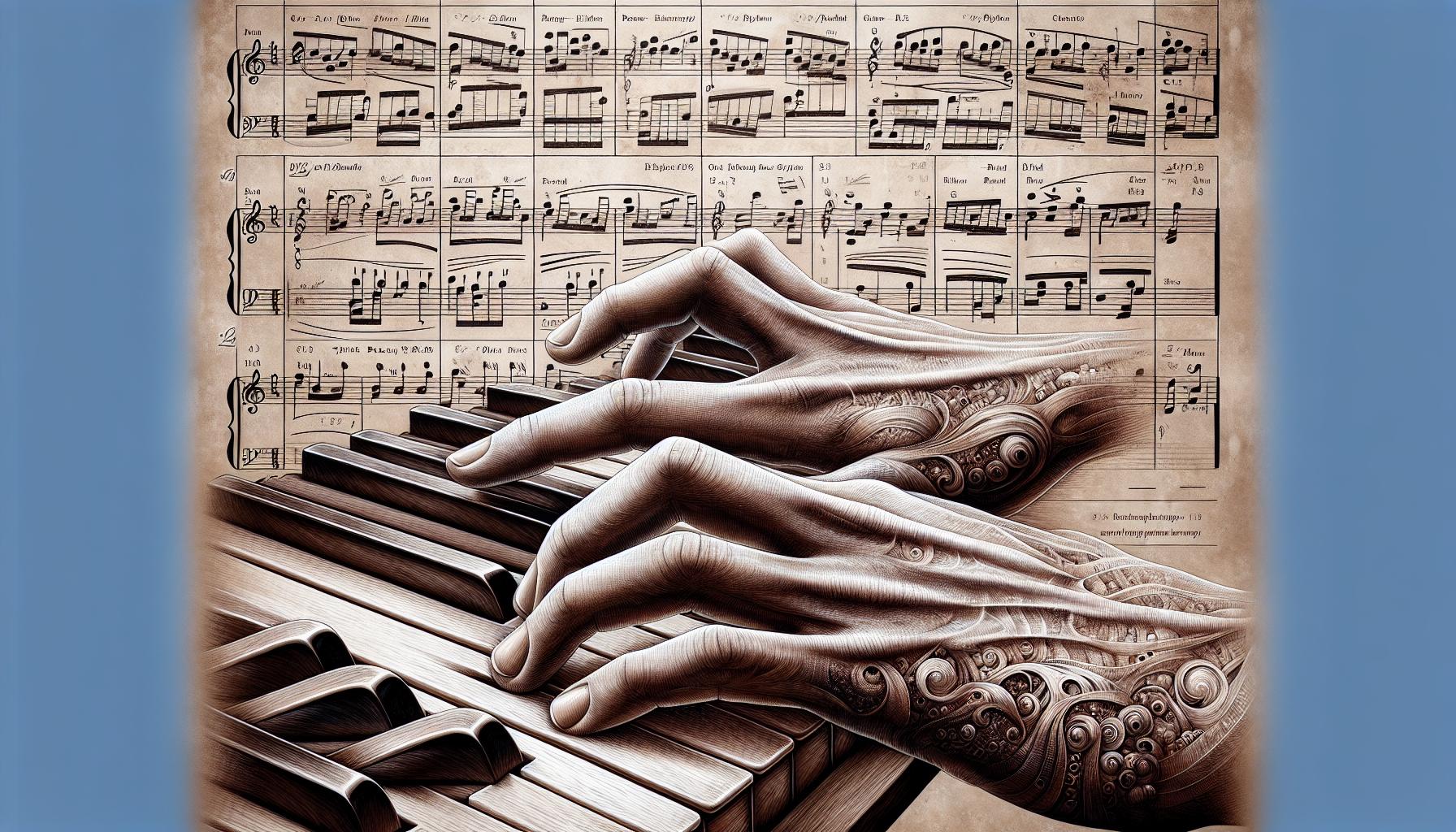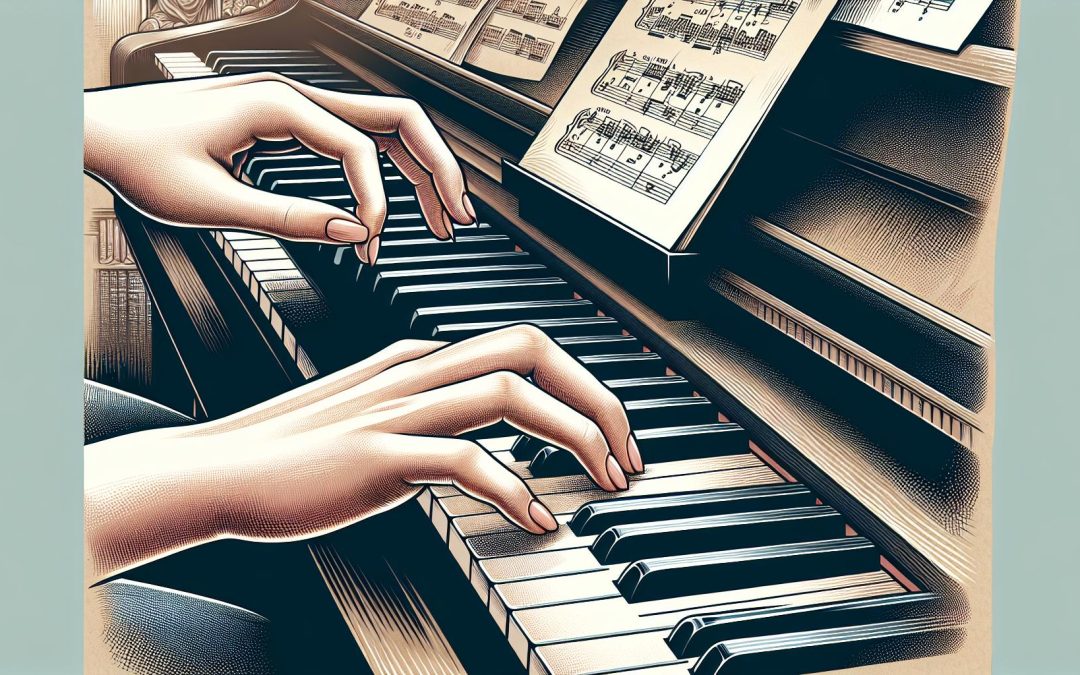Ever found yourself humming to a tune and wishing you could play it on your keyboard? You're not alone! Many music enthusiasts dream of bringing their favorite songs to life but often hit a roadblock when it comes to finding the right chords.
Thankfully, the digital age has made it easier than ever to uncover the secrets behind any melody. Whether you're a beginner hoping to strum along to the latest hits or an experienced musician aiming to expand your repertoire, this guide is your ticket to unlocking keyboard chords for any song.
Understand the Basics of Chords
Before diving into the vast sea of music and attempting to decipher the chords of your favorite songs, it’s crucial to get familiar with the basic structure of chords. Chords form the backbone of most musical pieces, and understanding their fundamentals can significantly ease the process of identifying them in various songs.
At the heart of music theory, a chord is a combination of three or more notes played together to produce a harmonious sound. The simplest and most commonly used chord is the triad, which consists of the root note, a third, and a fifth. These elements work in concert to give each chord its distinctive sound and emotional impact. For anyone just beginning their journey into the world of music, becoming familiar with these basic chords is an indispensable first step.
There are mainly four types of triads that are essential:
- Major chords, which sound happy and full
- Minor chords, known for their sad and melodic tone
- Diminished chords, which carry a sense of tension and instability
- Augmented chords, offering a unique, slightly dissonant sound
To put this into practice, one doesn't need an extensive background in music theory. Many resources are available online that provide detailed charts and diagrams showing the finger positions for these chords on a keyboard. By starting with these primary chords, musicians can play a surprisingly wide range of songs and begin to understand how different pieces of music are constructed.
Furthermore, the concept of chord progression comes into play. A chord progression is a series of chords played in sequence. Popular music often relies on familiar progressions that evoke certain feelings and moods in the listener. Recognizing these patterns can vastly improve one’s ability to pick out chords by ear, a skill that becomes invaluable when looking to play along with songs.
For those aspiring to take their understanding to the next level, exploring scales is the next logical step. Each chord is associated with a particular scale, and knowledge of scales not only aids in the identification of chords but also in the improvisation and creation of music. The major and minor scales are the foundation, but there are also blues, pentatonic, and other exotic scales that bring different flavors to music.
Fortunately, modern technology has made it easier than ever to learn about chords and scales. Numerous apps and websites offer interactive lessons tailored to both beginners and more experienced players. These tools often provide feedback and can track progress, making the learning process both efficient and enjoyable.
Utilize Online Resources and Apps

In today's digital age, countless resources are at a musician's fingertips to help demystify the process of identifying chords for any song on the keyboard. From beginners to seasoned musicians, online tools and mobile apps have transformed the way one learns and practices music. Whether it's figuring out the chords to a new pop song or dissecting a complex jazz arrangement, these platforms offer solutions that cater to every need.
Websites dedicated to chord sheets serve as a valuable resource for musicians looking to learn new songs. These sites host a vast collection of songs across various genres, complete with detailed chord charts. Users can search for a song by title or artist and often find multiple versions of chords submitted by other musicians. This community-driven approach not only provides access to an extensive library of songs but also offers insights into different ways a song can be played.
Mobile apps for chord recognition take learning to the next level. Apps like Chordify or Yousician listen to the song through the device's microphone and analyze it in real-time, displaying the chords as the song plays. This feature is incredibly beneficial for those trying to learn a song by ear. It also allows musicians to practice along with the actual track, providing a more immersive learning experience.
Another noteworthy mention is online music theory tools and courses. These resources offer structured lessons on chords, scales, and chord progressions. They're designed to deepen the user's understanding of music theory, enabling them to not only find chords for any song but also comprehend why those chords work together. Many of these courses include interactive components, such as quizzes and exercises, reinforcing the learning process.
For hands-on practice, several virtual keyboard applications are available online. These simulate a real keyboard on the screen, allowing users to practice chords without having a physical keyboard at hand. It's an excellent tool for visual learners and those who wish to practice away from their instrument.
| Resource Type | Benefits |
|---|---|
| Chord Sheets Websites | Wide range of songs, community contributions |
| Chord Recognition Apps | Real-time analysis, play along with tracks |
| Music Theory Tools | Structured lessons, deeper understanding of music theory |
| Virtual Keyboard Apps | Practice without a physical instrument, beneficial for visual learners |
Learn to Transcribe Chords by Ear

Transcribing chords by ear might seem daunting at first, but it's a skill that greatly enhances a musician's understanding and appreciation of music. It's about listening to a song and figuring out the chords without referring to a chord sheet. This ability not only improves one's ear for music but also fosters a deeper connection with the pieces one plays.
One of the first steps in learning to transcribe by ear is to Familiarize Oneself With Chord Sounds. Major, minor, diminished, and augmented chords each have a distinct character. Recognizing these differences is critical. A good exercise is to play various chords on the keyboard and listen to their tonal qualities. Over time, the ear will start to distinguish these different sounds in music.
Next, it's important to Start With Simple Songs. Choosing songs with clear, slow chord progressions can make the process of identifying chords by ear much easier. Many popular music tracks stick to four-chord progressions, making them ideal for practice. As one becomes more comfortable with this, they can gradually move on to more complex pieces.
Employing the use of technology can also aid in this process. There are numerous Pitch and Tempo Changing Apps available that can slow down a song without altering its pitch. This allows musicians to listen to chord changes more clearly and gives them more time to figure out which chords are being played. These apps can be an invaluable tool for those learning to transcribe music by ear.
Another pivotal aspect is to Practice Regularly. Like any skill, consistency is key. Setting aside time each day to train one's ear will result in quicker and more accurate chord identification. It's also helpful to occasionally test oneself by trying to transcribe a new song without any assistance and then checking the accuracy against available chord sheets or tutorials.
Moreover, engaging in Ear Training Exercises can be highly beneficial. There are many online resources and mobile apps designed specifically to improve musical ear training. These exercises often include identifying intervals, chord qualities, and chord progressions by ear, all of which are crucial skills for transcribing chords.
Understanding the Context of the Song also plays a significant role. Knowing the genre, the typical chord progressions used in that genre, and any stylistic elements can hint at what chords might be coming next. This contextual knowledge, combined with a trained ear, will significantly streamline the transcription process.
Experiment with Different Voicings and Inversions

After mastering the basics of identifying chords by ear and familiarizing oneself with the typical progressions within various genres, the next step in finding keyboard chords for any song involves experimenting with different voicings and inversions. This practice not only enhances the musician's ability to play more complex pieces but also adds a layer of sophistication to their performance.
Voicings refer to how the notes of a chord are spread out across the keyboard, while inversions focus on changing the bass note of the chord. Playing around with these aspects can dramatically change the sound and mood of a song, making it crucial for those seeking to accurately capture the essence of the music they're learning.
Why Experiment with Voicings?
- Adds richness and depth: Different voicings can make a chord sound fuller or more subtle, depending on the song's needs.
- Improves hand independence: Practicing various voicings helps musicians develop better control over their fingers, leading to more intricate and expressive playing.
- Enhances musical understanding: Understanding how to voice chords gives insight into the composer’s intentions, offering a deeper appreciation of the music.
Inversions: A Gateway to Sophistication
Inversions play a key role in transition between chords smoothly. By keeping some notes constant while changing others, inversions can lead to more cohesive and interesting arrangements. They’re particularly useful in genres like jazz and classical music, where fluidity and elegance are paramount.
Steps to Experiment with Voicings and Inversions
- Identify the basic chord structure: Before altering it, one must first recognize the chord they’re working with.
- Rearrange the notes: Try spreading the notes out across the keyboard or grouping them closer together. Observe how these changes affect the sound.
- Change the bass note: Alter the inversion of the chord by playing different notes of the chord in the bass. Notice the differences in tension and resolution.
Practical Exercises
- Replicate famous pieces: Choose songs known for their unique chord progressions and try to replicate the voicings and inversions used.
- Create variations: Take a simple song and play it using different voicings and inversions. Record the variations and compare how they sound.
- Use technology: Employ apps and software that display chords and inversions. This technology can offer visual guidance and inspiration.
Practice, Practice, Practice!

Embarking on the journey to find keyboard chords for any song isn't just about understanding theory or recognizing patterns; it's rooted deeply in consistent and deliberate practice. They say practice makes perfect, and when it comes to mastering keyboard chords, this age-old adage couldn't be more accurate. Dedicating time each day to practice not only solidifies one's grasp of basic chords but also sharpens the ear, enabling musicians to identify and replicate chords more intuitively over time.
To streamline the learning process, musicians are encouraged to start with simple songs. These are the kind of tracks that rely on straightforward chord progressions and fewer chord changes. By focusing on these simpler compositions, learners can gradually build their confidence and capability, setting a strong foundation for tackling more complex pieces in the future. As the familiarity with various chords and their sounds grows, transitioning to songs with more intricate harmonies becomes significantly less daunting.
One effective strategy is to incorporate Daily Learning Sessions that include a mix of chord identification, practice, and application. By dedicating specific blocks of time to focus solely on listening to songs and attempting to transcribe the chords, followed by practicing these chords and applying them in different contexts, learners can greatly enhance their skill set. Furthermore, they can:
- Record their practice sessions to track progress and identify areas for improvement.
- Use technology, like chord identification apps and online tutorials, to supplement their learning.
- Experiment with writing their own chord progressions based on the songs they're working on.
It is also vital to Engage in Active Listening, where learners pay close attention not just to the melody but to the underlying chord structures and how they progress throughout a song. This approach not only aids in chord identification but also enriches one's musical appreciation and understanding.
Here are some suggested daily practice routines:
| Routine Component | Time Allocated |
|---|---|
| Warm-up (finger exercises and scales) | 10 minutes |
| Chord identification (listening to new songs) | 20 minutes |
| Chord practice (repetition of newly learned chords) | 15 minutes |
| Application (playing along with songs or backing tracks) | 15 minutes |
Conclusion
Mastering keyboard chords for any song is a journey that requires patience, dedication, and a structured approach. By starting with the basics and gradually increasing complexity, musicians can build a solid foundation. Incorporating daily learning sessions, leveraging technology, and actively listening to music can significantly enhance one's ability to recognize and play chords. Remember, the key to success lies in consistent practice and a willingness to explore new strategies. So grab your keyboard, dive into the world of chords, and let the music guide your path to mastery. Happy playing!
Harlan Kilstein began playing piano during covid with no piano background at all. He taught himself how to play learning what to do and what not to do.
Today he's an advanced intermediate player and can help you grow in your skills because he learned all this on his own.







